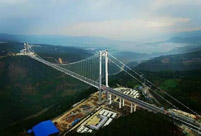

Supply-side structural reform, a policy that China has adopted to restructure its economy, should be given more priority in macro-economic regulation, according to an "authoritative insider" interviewed by People’s Daily.
Although the economy has lately seen good progress, the reform is still necessary in order to ensure healthy macro-economic development. However, the intensity and focus of that reform should be tailored to each individual phase, said the "authoritative insider."
China's supply-side structural reform has attracted attention and praise from both domestic and foreign voices. Since the start of the 13th Five-Year Plan, supply-side reform has become China’s main economic task. This is a war that China cannot afford to lose, the "authoritative insider" pointed out. So far, several big plans have taken shape; all will be implemented after they have been sufficiently studied and analyzed.
With its five individual tasks — decapacity, destocking, de-leveraging, lowering corporate costs and improving weak links — supply-side structural reform is undoubtedly an important challenge to carry out.
The "authoritative insider" also dismissed doubts over a possible increasing downward pressure brought about by conflicts between economic growth and decapacity. Such conflicts may exist in the short term, the insider explained, but in the long term, as soon as a proper approach is adopted to deal with the relationship between growth and structural adjustment, structural adjustment will inject impetus into the economy while decapacity helps to optimize structure and bring sustainable, healthy development.
“Short-term growth achieved by excessive capacity is not sustainable. It could lead to more losses and a longer transition,” the source added. In addition, when cutting excessive capacity, effective supply should be increased. This adjustment has already been implemented with great success around central and western China.
This article is edited and translated from 权威人士谈当前中国经济 Source:People's Daily
 Beijing Style: ready for bare legs
Beijing Style: ready for bare legs Century-old station sees railyway evolution
Century-old station sees railyway evolution Amazing scenery of Xisha Islands
Amazing scenery of Xisha Islands Enthusiasts perform Kung Fu at Wudang Mountain
Enthusiasts perform Kung Fu at Wudang Mountain Stunning photos of China's fighter jets in drill
Stunning photos of China's fighter jets in drill Monk's mummified body to be made into a gold Buddha statue
Monk's mummified body to be made into a gold Buddha statue Asia's longest and highest suspension bridge to open to traffic
Asia's longest and highest suspension bridge to open to traffic China's first interactive robot looks like a beauty
China's first interactive robot looks like a beauty Vietnamese Su-30 fighters fly over Nanwei Island in South China Sea
Vietnamese Su-30 fighters fly over Nanwei Island in South China Sea Top 20 hottest women in the world in 2014
Top 20 hottest women in the world in 2014 Top 10 hardest languages to learn
Top 10 hardest languages to learn 10 Chinese female stars with most beautiful faces
10 Chinese female stars with most beautiful faces China’s Top 10 Unique Bridges, Highways and Roads
China’s Top 10 Unique Bridges, Highways and Roads Is Pyongyang’s no-first-use pledge new stance?
Is Pyongyang’s no-first-use pledge new stance?  Kilns stick to ancient way of making bricks despite rock-bottom demand
Kilns stick to ancient way of making bricks despite rock-bottom demand China scores back-to-back exports growth
China scores back-to-back exports growth Chinese women in intercultural marriages discuss the ups and downs of dealing with their husbands’ moms
Chinese women in intercultural marriages discuss the ups and downs of dealing with their husbands’ momsDay|Week